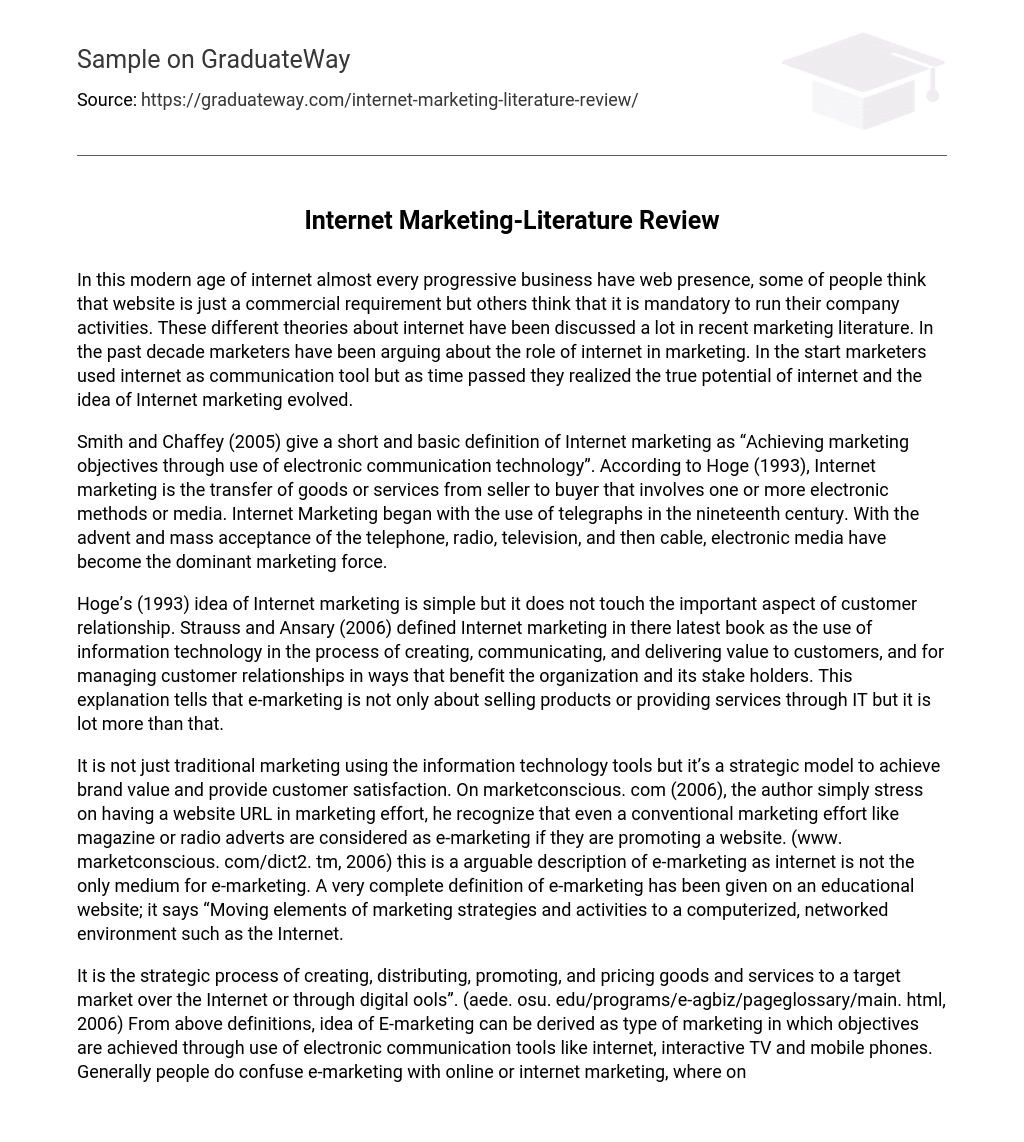In today’s digital era, having a web presence is crucial for any forward-thinking business. While some may see a website as a mere necessity, others understand it as an essential component for conducting company activities. The internet’s significance has been extensively discussed in recent marketing literature. Marketers have debated its role in marketing and initially saw it mainly as a communication tool. However, over time they realized its immense potential, leading to the evolution of Internet marketing.
Smith and Chaffey (2005) provide a concise definition of Internet marketing as “Achieving marketing objectives through the use of electronic communication technology”. Hoge (1993) states that Internet marketing involves the transfer of goods or services from seller to buyer using electronic methods or media. This type of marketing originated in the nineteenth century with the use of telegraphs and has evolved with advancements in technology, such as the telephone, radio, television, and cable. Today, electronic media is the primary force driving marketing strategies.
Hoge’s (1993) concept of Internet marketing is straightforward, yet it lacks sufficient emphasis on the crucial element of customer relationships. As stated by Strauss and Ansary (2006) in their recent publication, Internet marketing entails not only utilizing information technology for selling products or offering services, but also for generating, communicating, and delivering value to customers. Furthermore, it involves effectively managing customer relationships to benefit both the organization and its stakeholders. This clarification underscores that e-marketing encompasses more than solely employing IT for sales or services.
e-Marketing is a strategic approach that utilizes information technology tools to achieve brand value and customer satisfaction. According to an article from marketconscious.com in 2006, including a website URL in marketing efforts is essential for e-marketing, even when using traditional methods like magazine or radio advertisements (www.marketconscious.com/dict2.tm, 2006). However, the debate over whether the internet exclusively serves as the medium for e-marketing exists. A more comprehensive definition can be found on an educational website that explains how e-marketing involves shifting marketing strategies and activities to a computerized, networked environment such as the Internet.
E-marketing, also known as electronic marketing, utilizes electronic communication tools to generate, disseminate, promote, and determine the cost of products and services for a specific market. This approach encompasses technologies such as the internet, interactive TV, and mobile phones. It is crucial not to mistake e-marketing for online or internet marketing that solely concentrates on accomplishing marketing objectives through internet technology.
According to Dave Chaffey (2002), E-marketing is defined as the utilization of digital technologies, including online channels such as the Web, e-mail, databases, as well as mobile/wireless and digital TV, in order to enhance marketing activities. These activities are aimed at achieving profitable customer acquisition and retention within a multi-channel buying process and customer lifecycle. This is accomplished by improving our understanding of customers through their profiles, behavior, value, and loyalty drivers. Subsequently, integrated targeted communications and online services are delivered to cater to their individual needs (http://www.wnim.com/archive/issue2904/emarketing.htm, 2006).





